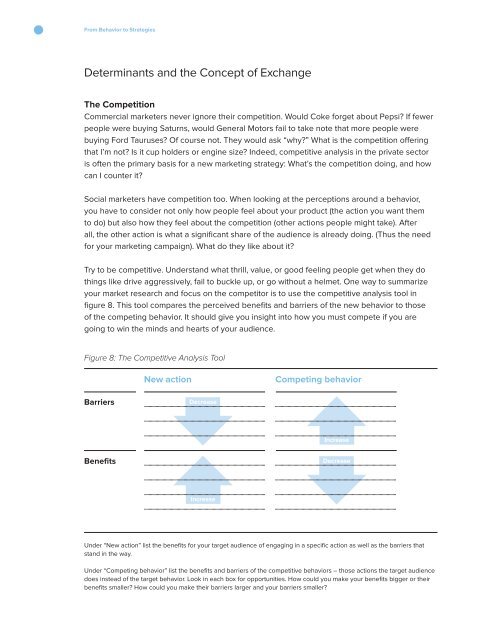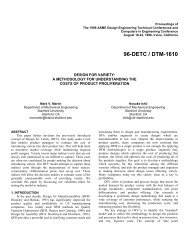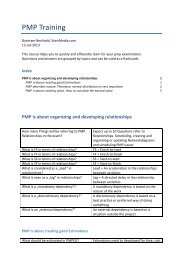Social Marketing
You also want an ePaper? Increase the reach of your titles
YUMPU automatically turns print PDFs into web optimized ePapers that Google loves.
From Behavior to Strategies<br />
Determinants and the Concept of Exchange<br />
The Competition<br />
Commercial marketers never ignore their competition. Would Coke forget about Pepsi? If fewer<br />
people were buying Saturns, would General Motors fail to take note that more people were<br />
buying Ford Tauruses? Of course not. They would ask “why?” What is the competition offering<br />
that I’m not? Is it cup holders or engine size? Indeed, competitive analysis in the private sector<br />
is often the primary basis for a new marketing strategy: What’s the competition doing, and how<br />
can I counter it?<br />
<strong>Social</strong> marketers have competition too. When looking at the perceptions around a behavior,<br />
you have to consider not only how people feel about your product (the action you want them<br />
to do) but also how they feel about the competition (other actions people might take). After<br />
all, the other action is what a significant share of the audience is already doing. (Thus the need<br />
for your marketing campaign). What do they like about it?<br />
Try to be competitive. Understand what thrill, value, or good feeling people get when they do<br />
things like drive aggressively, fail to buckle up, or go without a helmet. One way to summarize<br />
your market research and focus on the competitor is to use the competitive analysis tool in<br />
figure 8. This tool compares the perceived benefits and barriers of the new behavior to those<br />
of the competing behavior. It should give you insight into how you must compete if you are<br />
going to win the minds and hearts of your audience.<br />
Figure 8: The Competitive Analysis Tool<br />
Barriers<br />
Benefits<br />
New action<br />
Decrease<br />
Increase<br />
Competing behavior<br />
Increase<br />
Decrease<br />
Under “New action” list the benefits for your target audience of engaging in a specific action as well as the barriers that<br />
stand in the way.<br />
Under “Competing behavior” list the benefits and barriers of the competitive behaviors – those actions the target audience<br />
does instead of the target behavior. Look in each box for opportunities. How could you make your benefits bigger or their<br />
benefits smaller? How could you make their barriers larger and your barriers smaller?

















